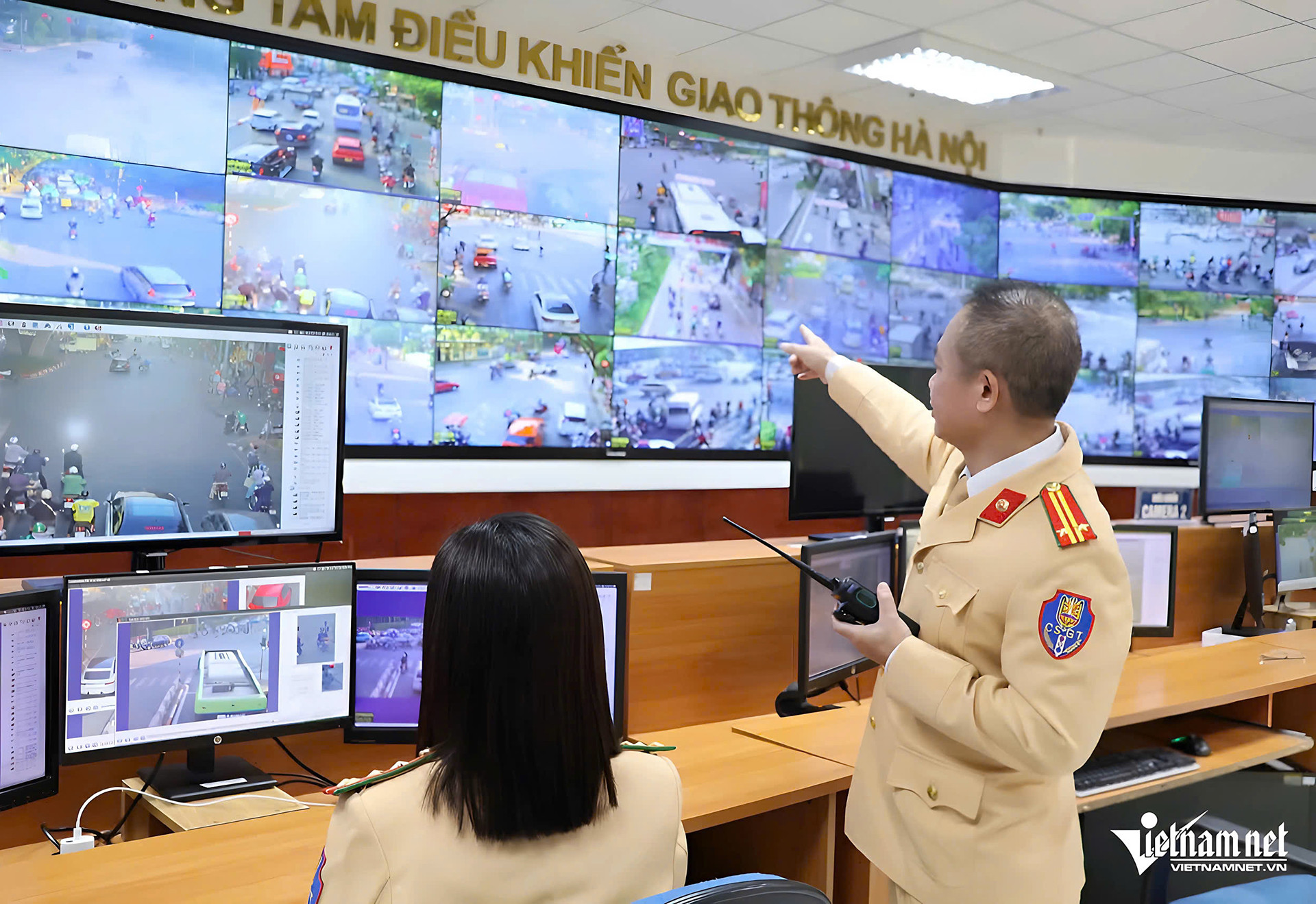The Traffic Safety Law and Decree 168 have brought a significant transformation to Vietnam's traffic police, moving from manual operations to advanced technology to re-establish traffic order and discipline.
From January 1, 2025, the Traffic Safety Law and Decree 168/2024 officially came into effect, ushering in a new era of technology-driven operations for Vietnam's traffic police.
Colonel Nguyen Quang Nhat, Head of the Traffic Accident Investigation and Guidance Division (Department 3, Traffic Police Department), explained that the Ministry of Public Security had drafted five decrees and 15 circulars to implement the Traffic Safety Law, reflecting its core role in road traffic safety management.
The Traffic Police Department has prepared the necessary infrastructure, software, databases, and Traffic Command Centers to support this transformation.
Leveraging technology for enforcement

According to Colonel Nhat, traffic police now prioritize technological tools, including monitoring systems and cameras, to provide visual evidence of violations while supplementing direct observation.
The integration of data on license points with the National Public Service Portal and the National Population Database ensures a streamlined process for monitoring and managing license suspensions.
With the incorporation of driving-related documents into the VNeID application, drivers can track all relevant information on their smartphones, enabling greater convenience and accountability.
In high-traffic areas, Captain Pham Van Chien, Head of Traffic Police Team 6 in Hanoi, noted the effectiveness of camera-equipped patrols. Cameras record violations and traffic conditions while capturing date, time, and GPS coordinates.
The deployment of these cameras has notably reduced traffic violations, improving citizens' compliance with traffic signals and laws.
“This technological approach allows violators to review their actions with concrete evidence, making enforcement more transparent and convincing,” said Captain Chien. He also emphasized the need for increased deployment of advanced monitoring equipment, particularly at intersections.
Strengthening traffic discipline
Decree 168/2024 introduces stricter penalties for dangerous and intentional violations, replacing Decree 100/2019 (amended by Decree 123). These measures are designed to address root causes of traffic accidents and reinforce the importance of law compliance.
Colonel Nhat highlighted stiffer penalties for actions like driving against traffic, reckless driving, or weaving dangerously. In severe cases, vehicles may even be confiscated.
For instance, fines for ignoring traffic lights have increased from 4–6 million VND to 18–20 million VND. Overall, penalties are now 3–30 times higher than previous levels.
This heightened enforcement has already shown positive results. According to Colonel Nhat, within just two weeks of implementation, traffic discipline and compliance improved significantly, with many citizens adhering to the rules even in the absence of active patrols.
Promising results
In the first two weeks of Decree 168’s enforcement, traffic accidents decreased across all metrics compared to both the same period last year and the preceding period.
Nationwide, 681 traffic accidents resulted in 365 deaths and 453 injuries, representing a 34.27% drop in accidents, an 11.41% reduction in fatalities, and a 34.24% decline in injuries compared to the same period last year.
Compared to the previous period, accidents decreased by 34.53%, fatalities by 20.47%, and injuries by 39.92%.
Most incidents occurred on roadways, with 677 accidents leading to 363 deaths and 452 injuries. Compared to the previous year, road accidents fell by 34.20%, fatalities by 11.03%, and injuries by 48.51%.
These figures demonstrate the immediate impact of enhanced technology and stricter enforcement in improving Vietnam’s traffic safety.
Dinh Hieu